It’s time to pamper Maa Durga, in all her avatars, during the nine days of Navratri. Here’s what’s cooking for her
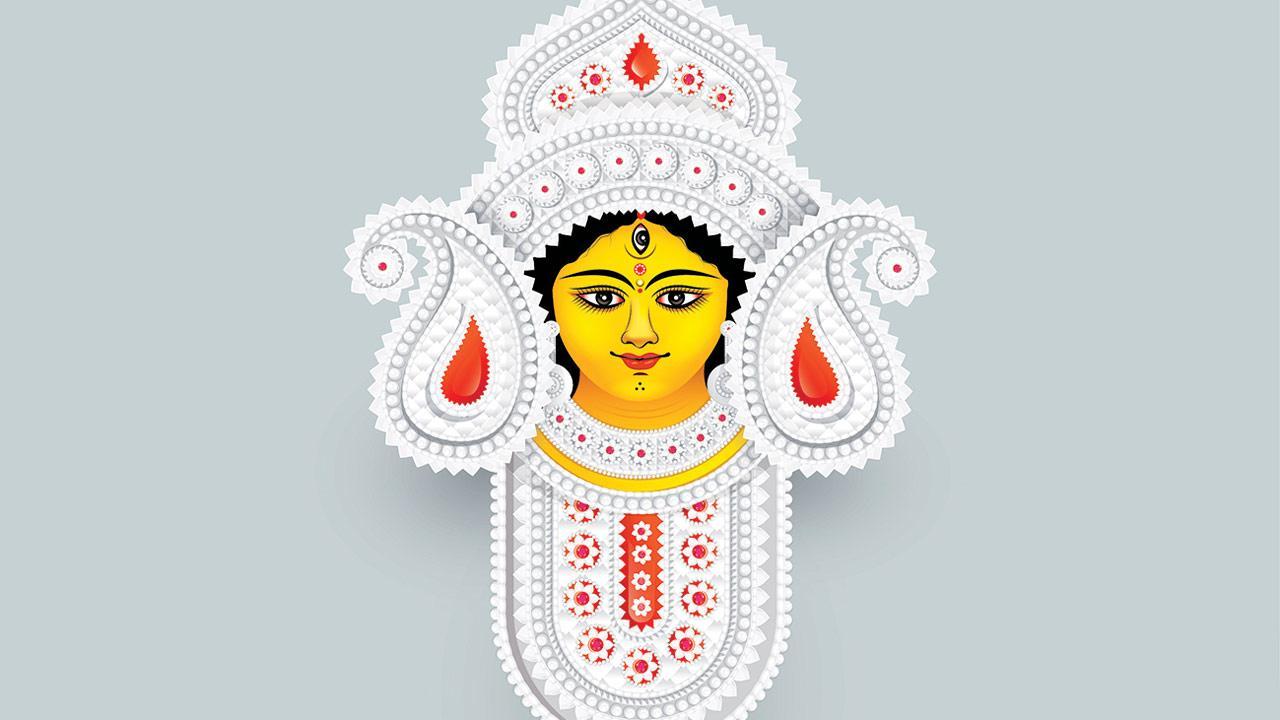
Representation Pic
In the mythological story, demon Mahishashur enjoyed Lord Vishnu’s boon of immortality. However, there was a loophole: Only a woman could defeat him. When he created havoc in heaven and drove all the gods out, Brahma, Vishnu and Shiva combined their energies to create Durga—the goddess who would destroy the shape-shifting demon. Slay him, she did.
ADVERTISEMENT
At the conjunction of Ashtami and Navami (eighth and ninth day), she defeated him when he turned into a buffalo. She earned the title of Mahishasur Mardini. Every year, during the nine nights of Navratra, Durga is worshipped, and her victory over evil is celebrated.
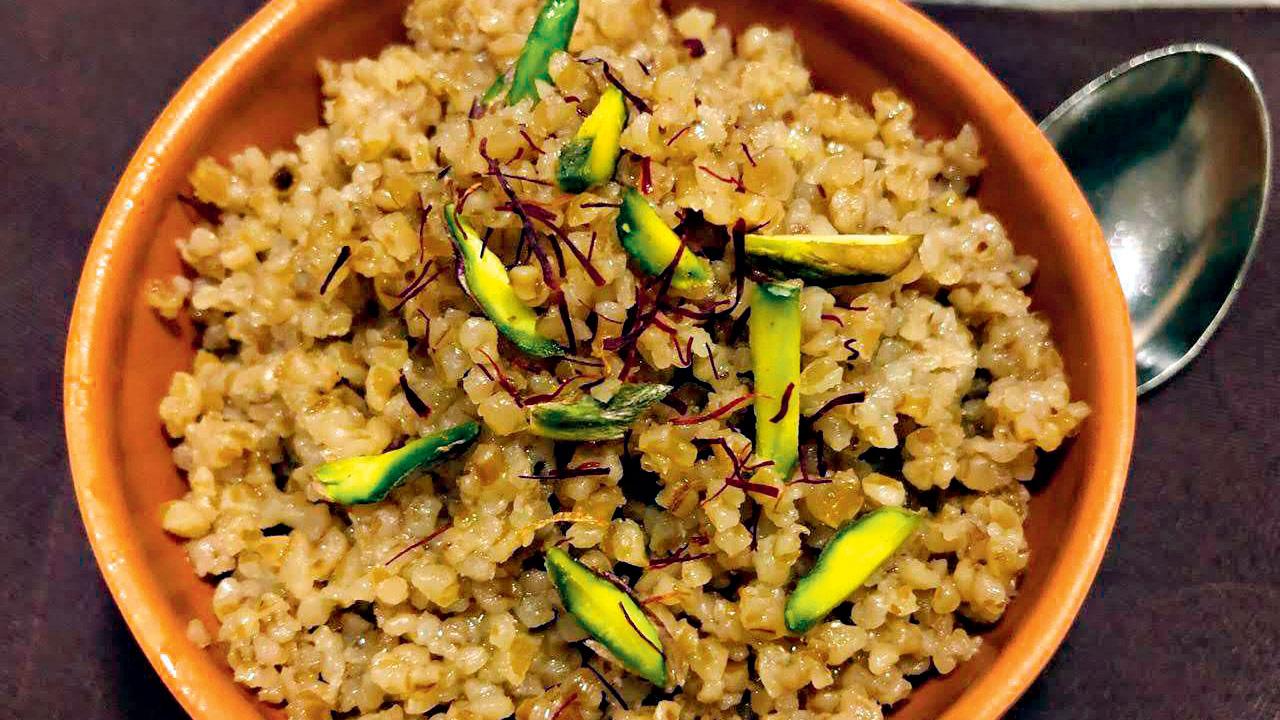
Lapsi
Chef consultant and food historian Pritha Sen clears the air about serving meat to the goddess: “Devotees in Bengal would sacrifice a buffalo or goat, and the meat, cooked sans onion and garlic, became prasad. This is the reason for the widespread ritual of eating meat on Navami. Most have now shifted to sacrificing gourds, mounds of sugar or fish.” Sen specialises in regional cuisines of eastern India, with a special focus on undivided Bengal.
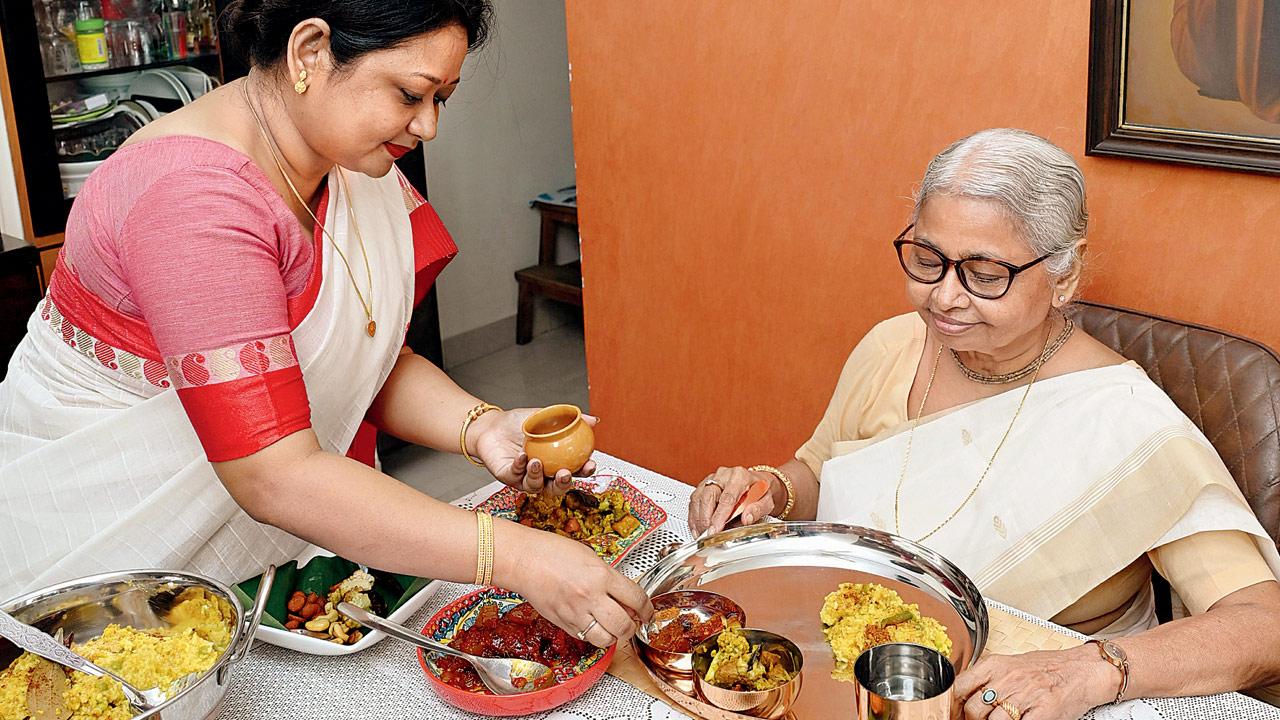
Home chef Somma Ghosh serves her mother khichuri, bhaja and chutney
“Bengalis consume vegetarian and non-vegetarian fare during Navratri as the shastras allow it, even while the rest of India sticks to vegetarian fare,” says Sen, explaining that Durga worship sees three main schools of thought—Vaishnav, Shakta and Tantra. “Vaishav sects revere her as the Universal mother, and stick to vegetarian food made sans onion and garlic. In Shakta school of thought, Durga is worshipped as shakti, the divine mother with 10 arms—Dashabhuja.” The other avatars of the Goddess include Jagatdhatri (eternal mother), Annapurna (creator), Kali, Uma (daughter) and Sati (wife). The cuisine incorporates fish and meat.
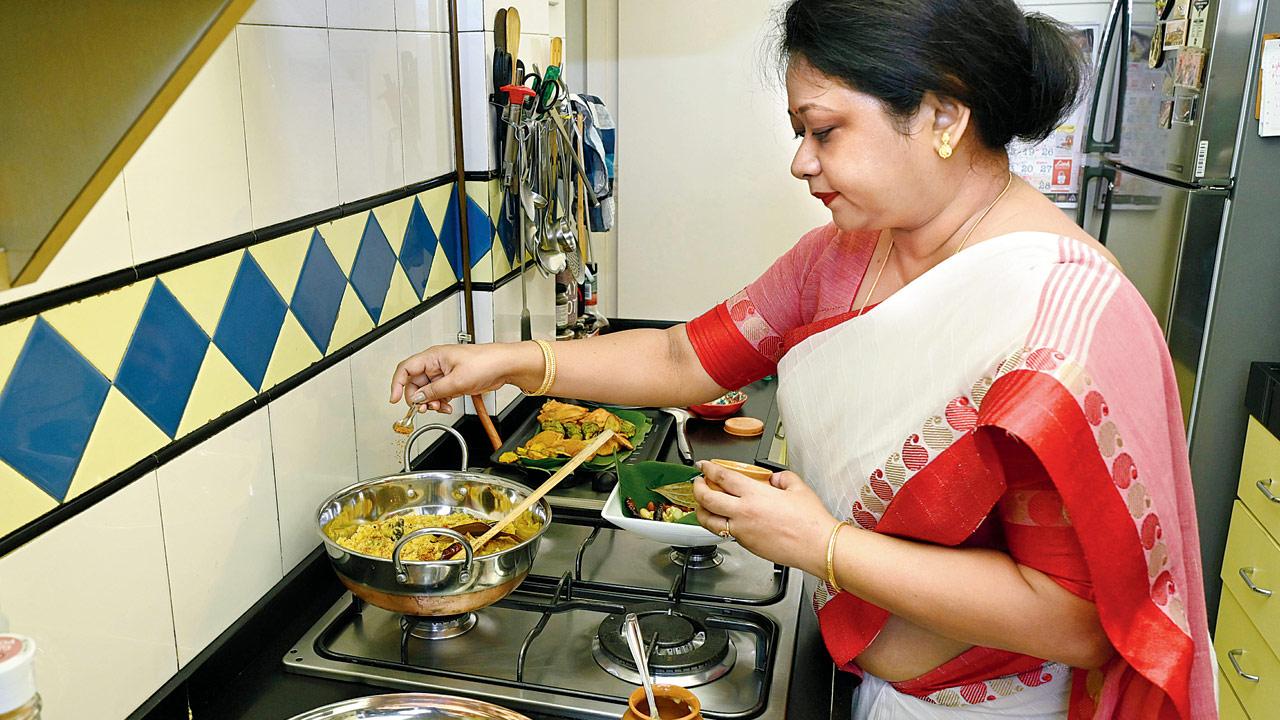
Somma Ghosh says bhog preparation is highly sacred. After taking a bath, cooking is a devotional practice to be done without tasting the food. Khichuri is a nutritious one-pot meal, easy to feed many people. PICS/SATEJ SHINDE
As per the third school of thought, Tantram Durga is Kali or Chamunda, associated with black magic. “She is wholeheartedly offered raw meat and liquor,” Sen concludes. In vegetarian bhog, Maa is offered fruits, a special khichuri, sweets such as rosgulla and pantua (elongated variation of gulab jamun made with chenna), along with kheer. The khichuri is accompanied by labra or a subzi made from cauliflower, potato or mixed veggies, a side of fried brinjal or potatoes (bhaja), and tomato khajur chutney.
This year, Bombay Durgabari Samiti (BDBS), which held its first pandal in 1930, will celebrate its 95th Durgautsav. “Mahishasur Mardini, it is said, descends on Earth during Navratri with her four children,” says Susmita Mitra, President, Bombay Durgabari Samiti. “This is why we make five portions of offerings to her idol. This, when mixed into the community meal, transforms into bhog.”
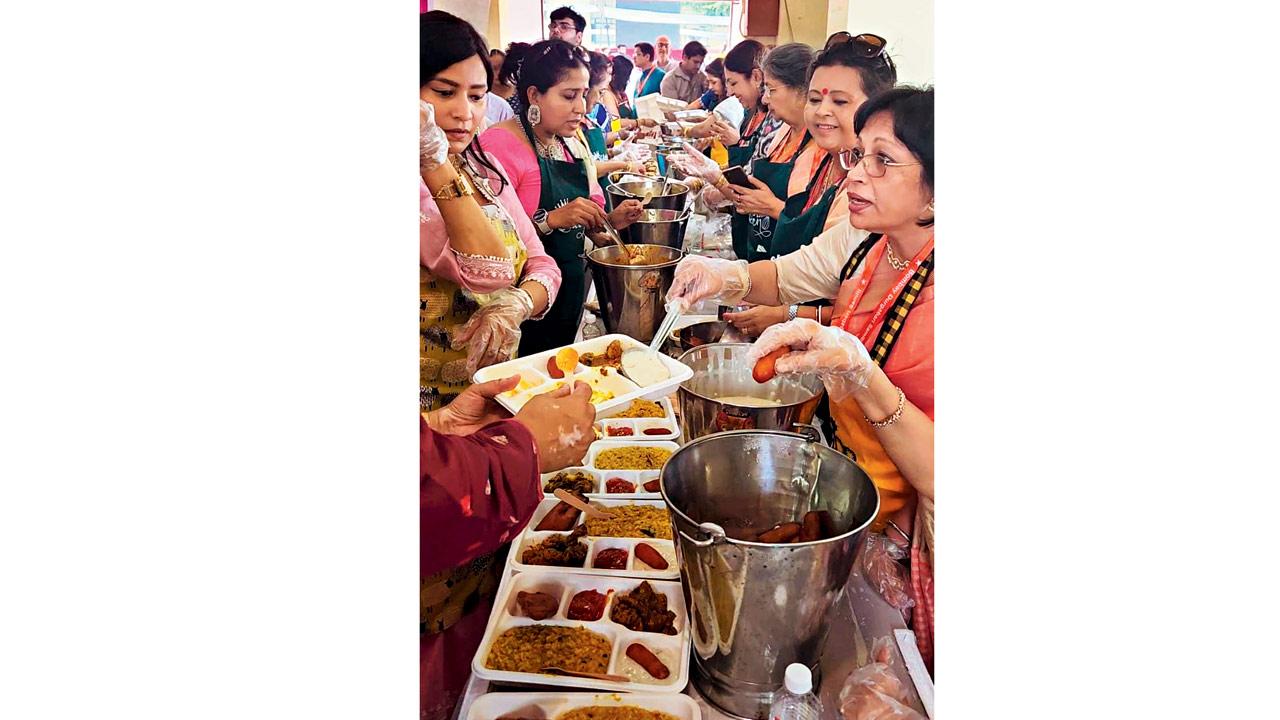 Bombay Durgabari Samiti members distributing bhog at Kemps Corner last year
Bombay Durgabari Samiti members distributing bhog at Kemps Corner last year
Home chef Somma Ghosh, who runs Kitchen Tales, explains the importance of the offering. “Bhog preparation is extremely sacred. After taking a bath, the cooking process is a devotional practice, to be done without tasting the food. Khichuri is a nutritious one-pot meal that is easy to digest. Since it takes comparatively less time to cook, it became the dish of choice to feed the masses who turn up for the community pujos.”
At Malad West Sarbojonin Durgotsav, where Ghosh is a founding member, khichuri for bhog is assigned for Ashtami, the most auspicious day during the Durga Pujo festivities, also has the highest footfall. “I have been cooking bhog for 11 years,” says Ghosh. Before the COVID-19 pandemic, all the women would gather to prepare bhog for 100 people at an open venue. For the five days—starting from the sixth day of Navratri— Shashti, Saptami, Ashtami, Navami and Dashami—a different bhog is prepared each day.”
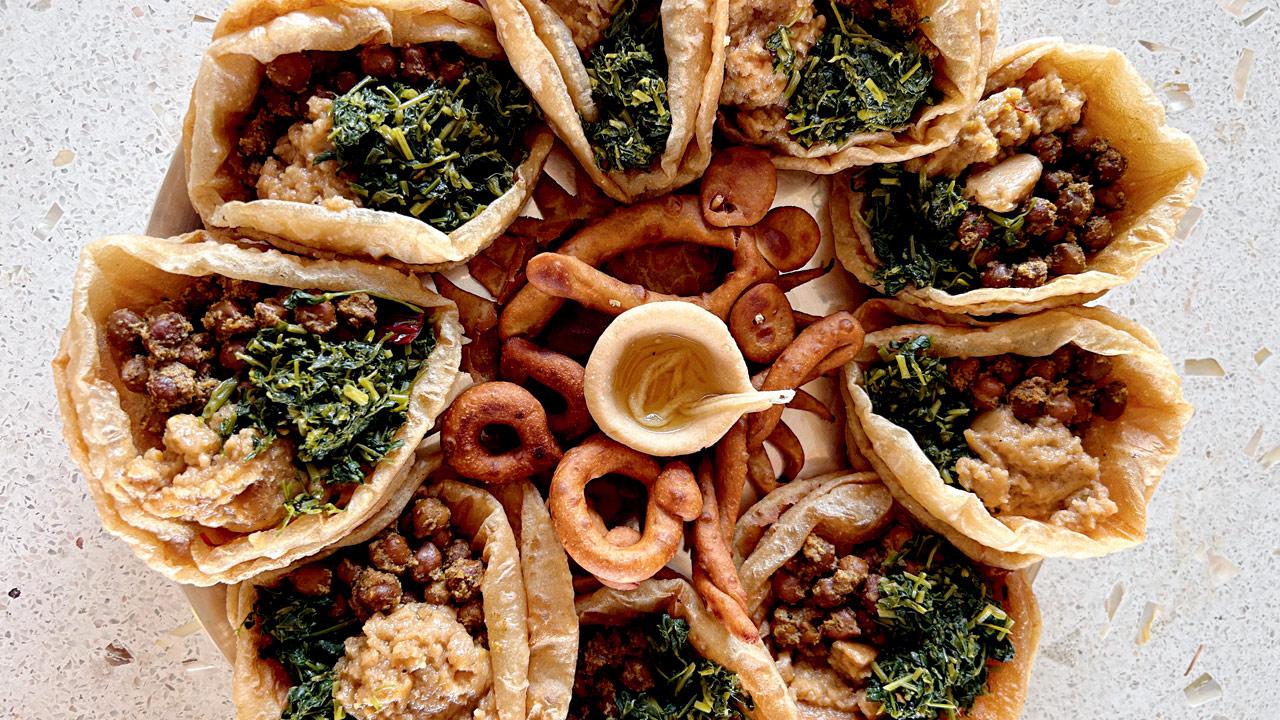
Tulja Devi: At Smita Deo’s house, the special bhog is made of roath, a sweet puri of wheat flour, dry ginger powder, jaggery and cardamom. Nine roaths are topped over each other. Over this, two regular puris are placed and topped with Channyachi usal, Methi chi bhaji and gavhacha sheera. The plating looks like a sun. Jewellery for the goddess is made with the same dough.
Khichuri is made from a small-grained sona moog, a dal that grows in Bengal. It is mixed with Gobindobhog rice and vegetables such as cauliflower, peas, potatoes, and tomatoes. On the side are five types of bhaja, Tomato Khejur Chutney, and paayesh (kheer). On other days, bhog may include lunches with chola dal, cauliflower, parwara, and aloo subzi.
“For Durga Pujo, Lokkhi Pujo and Saraswati Pujo, the khichdi is bhuna khichdi (dry) or normal, more watery khichdi. It smells aromatic, thanks to the Bengali Gawa cow ghee. We sprinkle roasted bhaja mashola (masala), which takes it to the next level,” says Ghosh, making our mouths water.

Poonam Dedhia
While Durga Puja is celebrated with much fanfare in Bengal, every state has its own traditions too. It’s roath puris for Tulja Bhavani, says Smitha Deo who hails from Karwar in Karnataka and shares the Maharashtrian tradition in her husband’s side of the family: “We worship the avatar Tuljachi Bhavani. The family performs a ghatasthapana in our home on the first day of Navratri. The idols of home gods and goddesses are bathed with milk, honey, attar, and dressed in fineries.”
The idols of the gods and goddesses are not moved from their position until the ninth day, when they are placed in their asanas. “Before every aarti,” explains Deo “we dip a flower infused with attar in water and sprinkle it on the idols, perform an aarti and offer dry fruits as bhog. On the eighth day, nine women and nine kumarikas (girls below the age of seven) are invited home. We offer them haldi kumkum, flowers, and fruits and pray to them (as they represent the devi). A simple lunch of puri, batatayachi (aloo) bhaji and kheer is served to the children, while the ladies are offered sabudana khichdi or sabudana vadas.”

Smita Deo and Pritha Sen
On the cusp of the ninth and tenth day, the idols are once again bathed, dressed and placed back on their asanas. “This marks a special bhog of nine roaths or sweet puri,” she continues to elaborate, “made from wheat flour, dry ginger powder, jaggery and cardamom. Nine roaths are topped over each other. Over this, two regular puris are placed and topped with channyachi usal, methi chi bhaji and gavhacha (wheat) sheera. The plating looks like the Sun. Jewellery for the goddess is made with the same dough. In the centre is a wheat flour lamp,” says Deo, adding, “On the day of the Dusserah, a bhog of rice and our traditional muttonacha tambda rassa, specifically with nalli, is offered.”
In Gujarat, lapsi is a special offering. Gautam Purohit of Thakkar Bhojnalay used to serve it at the restaurant. “We stopped because patrons don’t eat it now,” he laughs, adding, “It is full of ghee.” But every Navratri, the sweet dish made from bulgar or broken wheat is made in his home and offered to the goddess.
Lapsi for Gujarat Chef Poonam Dedhia, who recently concluded a Kutchi and Kathiyawadi food pop-up at Orchid Hotel in Vile Parle East, says, “Gujaratis and Kutchis do the Mata aarti and offer lapsi, kansar (whole wheat flour or broken wheat, sugar and clarified butter) and kheer to the goddess.” She says one of the wheat varieties, Vajiya, is rare today. “We used it to make bhog in the early days,This variety has almost vanished from our crops in Kutch. That wheat would be ground for prasad and stored for the entire year. Even the kheer we offer is more milky and not as dense as made in North India. We make it using fragrant and short rice such as Amba Mohar,” she concludes.
In Kerala, nei payasam, also called katti payasam is the sweet dish of choice to offer the goddess, says Chef Marina Balakrishnan, adding, “We also offer aval, poha sweetened with coconut and jaggery. This is the tradition followed during Saraswati, Lakshmi, and Durga pujas.”
The offerings of bhog vary regionally during Navratri, and the variation depends on local produce, food habits, and religious sects. “Hindus, who originally belonged to the erstwhile East Bengal, offer fish because of its abundance. This also marks when the last hilsa was traditionally eaten and fishing was stopped, only to resume during Saraswati puja, four months later, to allow renewed breeding. Sadly, no one follows it now, and hence, the hilsa is at risk of extinction due to overfishing. Some ground rules are followed — cooking without onion and garlic is a must, even for fish and meats,” Sen says.
Khichuri
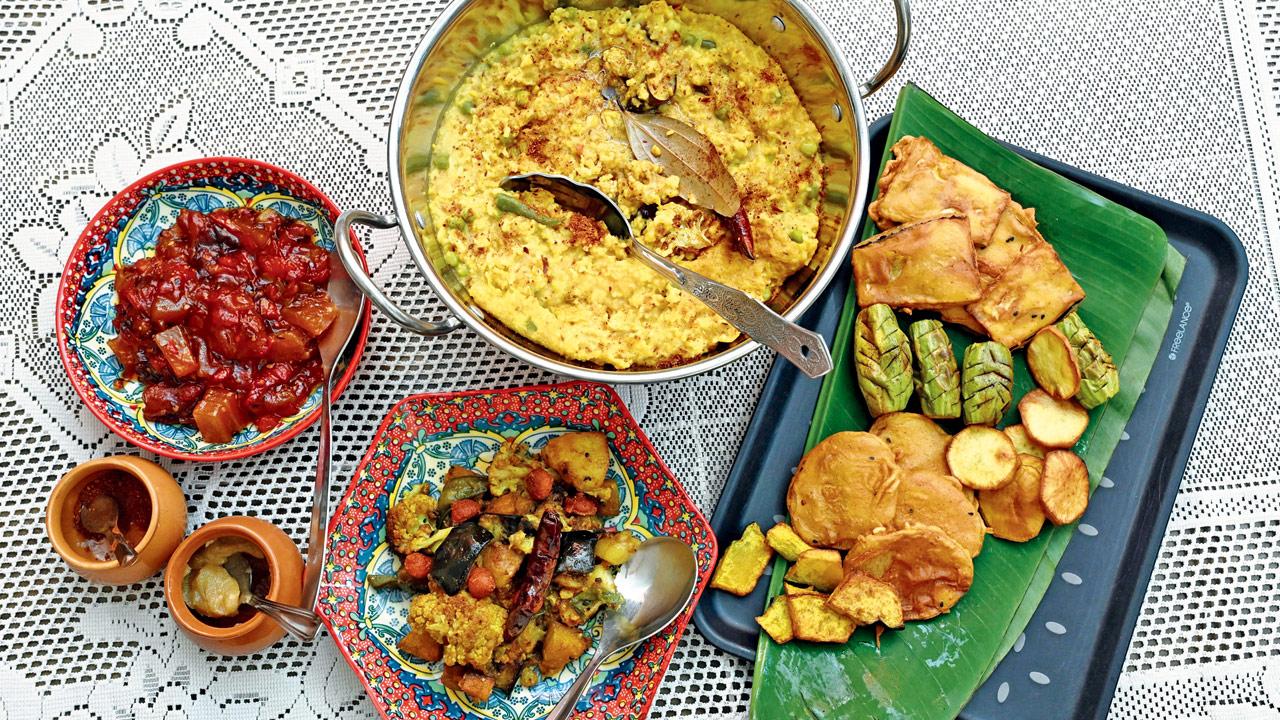
INGREDIENTS
1 cup Gobindobhog rice, washed and pre-soaked
1 cup sona moog dal
1 cup cauliflower florets
1/2 cup peas
1 large tomato, sliced
2 tbsp ginger, grated
4 green chillies
For tempering
1/2 tsp cumin seeds
3 bay leaves
3 red chillies, whole
2 tbsp cumin powder
1 tbsp turmeric powder
1.2 tsp Bengali bhaja moshla
Mustard oil
Cow’s ghee (Gaoa ghee)
Cumin seeds, fried and ground for garnishing
METHOD
Pour mustard oil into a kadhai, fry the cauliflower florets, and keep aside. Add cumin seeds, bay leaves and whole red chillies (cut into two) for tempering. Add the grated ginger, stir, then add moog dal and stir till golden brown. Add tomatoes, peas, cumin and turmeric powder; roast well. Add rice and salt. Pour six cups of hot water and green chillies, and shut the lid. Allow the khichuri to cook. Turn off the flame. Sprinkle bhaja moshla, add gaoa ghee. Serve hot.
Also Read: Navratri 2024: Follow these recipes to make unique sweet and savoury dishes during these nine days
 Subscribe today by clicking the link and stay updated with the latest news!" Click here!
Subscribe today by clicking the link and stay updated with the latest news!" Click here!







